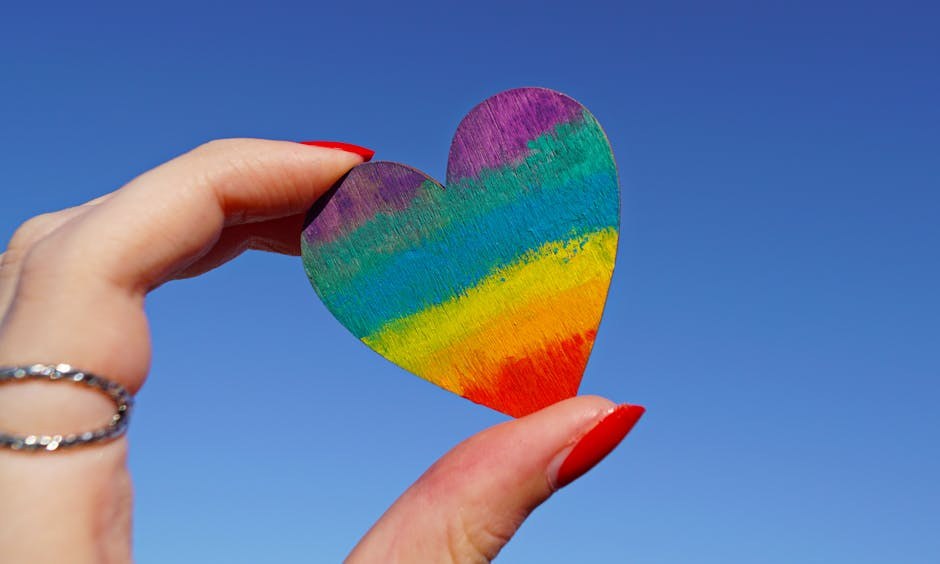Ask a room full of couples how long it took to fall in love and you’ll hear a chorus of wildly different timelines. Some swear it felt instant, others describe a slow build that unfolded over months, and many land somewhere in between. That spread isn’t a bug – it’s the point. Human attachment is diverse, romantic chemistry is layered, and the way you fall in love is shaped by temperament, history, and circumstance more than by any neat clock on the wall.
The heart has a clock – but it doesn’t tick the same for everyone
There is no single schedule that fits every story. You can map averages, but averages gloss over context. One couple texts for weeks before meeting; another spends every day together from the start. Friends-to-lovers pairs may already trust each other deeply; long-distance partners might progress slower because daily logistics are harder. Even in your own life, you may fall in love at one pace with one person and at a different pace with another. That variability is normal, and trying to standardize it can make you second-guess feelings that are completely valid.
It helps to separate two things that regularly get tangled: the surge of attraction that says “pay attention” and the steadier bond that feels like home. Both matter. Both contribute to whether you fall in love. And both are influenced by biology, psychology, and experience.

The psychology of attraction and attachment
Humans are wired for connection. We look for belonging, security, and a sense that our experiences make sense alongside someone else’s. When that need is met, we feel anchored. When it isn’t, we search. That search – sometimes deliberate, sometimes accidental – is the backdrop against which people fall in love.
Chemistry is not just a cute metaphor. Early romantic stages flood the brain with feel-good neurochemicals such as dopamine and oxytocin. Pleasure and reward circuits light up; hugs, kisses, and even casual touches strengthen the felt bond. You may notice spin-off effects: a more buoyant mood, a higher tolerance for minor annoyances, even a little less perceived pain. The flip side is volatility – if you’re unsure how the other person feels, the same systems can magnify stress and make your emotions swing. None of this means the bond is fake; it means your body is very involved in how you fall in love.
Those early fireworks can tint perception. In the glow, it’s easy to highlight someone’s best qualities and blur flaws – the classic “rose-colored glasses” effect. People often rate a partner as more attractive than a neutral observer would, and daydreams can sometimes feel richer than reality because imagination edits out the awkward bits. That doesn’t invalidate what you feel; it’s simply a reminder to let time widen the picture as you continue to fall in love.

What “on average” really means
If you’re looking for rough markers, there are patterns. People often make attraction judgments very quickly – reactions associated with love can fire in as little as one-fifth of a second. In many relationships, the rush of those early hormones eases after a few months. And when it comes to saying “I love you,” a common window is roughly one to three months, with many settling by the fourth month. These generalities explain why some relationships speed up in the beginning and then settle into a more even rhythm. They can help you normalize what’s happening as you fall in love, but they’re not deadlines or tests.
Surveys underscore how slippery “average” can be. Respondents vary by age, culture, gender, sexuality, and how they met – in person or online – and those variables affect pace. If everyone took the same course under the same conditions, an average score would mean something tidy. Love is not that classroom. The lesson plans differ, the quizzes are all customized, and the grading rubric keeps changing as people get to know each other. That’s why two earnest answers to “How long did it take you to fall in love?” can be totally different and still equally true.
Gendered timelines – and why they’re not destiny
Some research bites make the rounds because they’re memorable. One study linked a man’s lingering gaze – even around 8.2 seconds – with heightened romantic interest. Other findings report that many men consider confessing love by about 97 days, and a notable portion say “I love you” within the first month. Women, on average, often take longer; one commonly cited number is around 134 days to say the words, and fewer women than men say them within the first month. These figures are snapshots, not verdicts. They capture tendencies, not rules, and they certainly don’t determine whether you fall in love carefully or quickly.

Why the difference? Part of the story involves how desire, risk, and social expectation intersect. In the earliest stage, lust and idealization can run hot; some people lean in, others hang back. None of that dictates the quality of the bond that eventually forms when you genuinely fall in love.
Personal history that shapes your pace
We don’t start from blank slates. Early relationships with caregivers teach us how safe it feels to rely on someone. If affection was scarce or unpredictable, you might seek closeness hungrily in adulthood or, just as plausibly, protect yourself by staying guarded. The relationship between your parents – warm and stable, distant, or conflict-heavy – also writes early scripts. Those scripts can speed up or slow down how you fall in love, and noticing them helps you choose how to respond rather than reacting on autopilot.
Prior heartbreak matters too. People who have been badly hurt often move more cautiously, sometimes keeping partners at arm’s length even when they care deeply. That doesn’t mean they can’t or won’t fall in love again; it means they might need more time, reassurance, and consistency before they trust what they feel.
How people actually get there
There’s no magic formula – do this, do that, and voilà. Still, you can watch common paths. Some pairs bond over shared passions like music, food, or travel; others seize on intense physical chemistry; some discover compatibility in everyday rituals like cooking dinner or walking the dog. Grand romantic gestures light a spark for certain people; quiet, reliable presence is what opens the door for others. The circumstances of life matter: when a show or a unique situation puts two people in a bubble with limited outside noise, feelings can accelerate because focus is concentrated. In more typical settings, pace reflects how often you see each other, how vulnerable your conversations are, and whether your values line up – all of which shape the terrain on which you fall in love.
- You spend time – in person or virtually – and curiosity grows into familiarity.
- Shared stories build a lattice of inside jokes, rituals, and small responsibilities.
- Trust deepens as each of you handles the other’s hopes, disappointments, and boundaries with care.
- Attraction stabilizes into a bond that feels less like a flash and more like a choice – the space where many people say they truly fall in love.
Love versus lust – and the mixed signals between them
Passion is wonderful, and it can blur categories. Lust is a powerful sexual pull; love is deep affection and attachment. They overlap, especially as a relationship matures, but they’re not identical. You can feel a lightning strike of desire on a first date and misread it as love because it’s so strong. Conversely, you can fall in love with someone who wasn’t your most intense initial crush because safety, humor, and shared purpose turn the spark into a steady flame. The key is to give both your body and your judgment enough time to weigh in.
Signs you might already be in it
People sometimes ask, “How do I know?” There isn’t a lab test for it, but there are patterns that many recognize as they fall in love:
- Their name pops up in your mind and you smile before you can help it.
- They’re the first person you want to tell – whether the news is great or a little awful.
- Their wellbeing matters so much that you happily rearrange small things to make their day easier.
- You picture a future and they’re in it – not as a fantasy prop, but as a partner who shares decisions and trade-offs.
- You can be fully yourself, from the polished parts to the unglamorous bits, and you feel accepted.
None of these require fireworks every minute. Often, the best indicator is a blend of warmth, respect, and consistency that keeps inviting you to lean in as you fall in love.
Age and stage of life
What we call “love” can shift as we grow. In your early years, it may look like thrilling novelty and exploration; later, it may look like steadiness and shared goals. Some people say they didn’t know what love really felt like until after they’d lived more life; others insist they knew it young. Either way, your age and life stage change the lens through which you fall in love. Those changes don’t make earlier feelings fake – they show that love is a skill as well as a sensation.
Why averages don’t decide your moment
It bears repeating: general numbers can orient you, but they can’t tell you whether your feelings are “on time.” You might fall in love quickly because your values, communication, and daily rhythms click. You might take longer because healing, cautiousness, or logistics require it. Both paths are valid. What matters is that your experience is mutual, respectful, and aligned with how you both want to build the relationship.
Patience without games
Letting connection develop doesn’t mean playing coy or suppressing feelings to seem cool. It means allowing the relationship to reveal itself. If you’re tempted to race toward declarations just to lock things in, pause – urgency can sometimes be anxiety in disguise. If you’re endlessly delaying acknowledgment out of fear, that can also keep you from fully showing up. The sweet spot is honesty paired with pacing that matches reality as you fall in love.
When words feel true
So when are you “really” in love? The simplest answer is when it feels true and your actions back it up. There’s no milestone you must hit before the words count. You might look back years later and think, “We said it early,” or “We waited longer than most.” Neither memory erases the authenticity of the moment you chose to say it. If saying it now reflects how you’re treating each other – with care, curiosity, and commitment – that’s a good sign your version of fall in love is real.
Common detours on the way there
Two people in the same relationship rarely move in perfect synchrony. One partner might feel ready to name it while the other is still sorting out fear from excitement. That mismatch can be painful, but it isn’t automatically a deal-breaker. It’s a cue to talk about what each of you needs to keep investing. Sometimes, simple reassurance and a little time are enough; sometimes, different goals come into focus and you part. Even those endings teach you something about how you fall in love and what kind of love you want to practice next.
Keeping perspective through the first months
The early rush often softens around the time those brain chemicals level out. People sometimes call this the end of the honeymoon phase. What’s actually ending is the all-gas-no-brakes period when novelty did most of the heavy lifting. What begins is the grounded phase where you learn how you both repair after disagreements, how you share responsibilities, and how you handle stress. If you keep choosing each other there, you continue to fall in love in a deeper way – less theatrical, more durable.
What to watch for in yourself
Because excitement is loud, it can drown out quieter signals. Check in with how you’re acting, not just how you’re feeling. Do you keep your promises? Do you show up when it’s inconvenient? Do you root for their growth even when it shifts routines? Those behaviors are the daily verbs of love. If they’re present, you’re not just swept up in the idea – you’re living what it means to fall in love.
Putting it all together
There isn’t a quiz with a pass/fail score; there’s a dynamic conversation between biology, psychology, personal history, and shared experience. Attraction can spark in a blink; declarations often arrive within a few months; and averages can be interesting without being authoritative. Men may voice it sooner on average; women may wait longer. Early family patterns can speed you up or slow you down. Past hurt can make caution wise without making it permanent. Through all of it, the only timeline that ultimately matters is the one you and your partner are writing together – the one that lets you choose, day after day, to fall in love for real.
If there’s any guiding principle, it’s this: let your head and your heart be teammates. Give attraction time to prove itself, give comfort time to grow, and give honesty room to breathe. That balance won’t look identical in every story, but it’s the most reliable way to protect the wonder of how you personally fall in love.